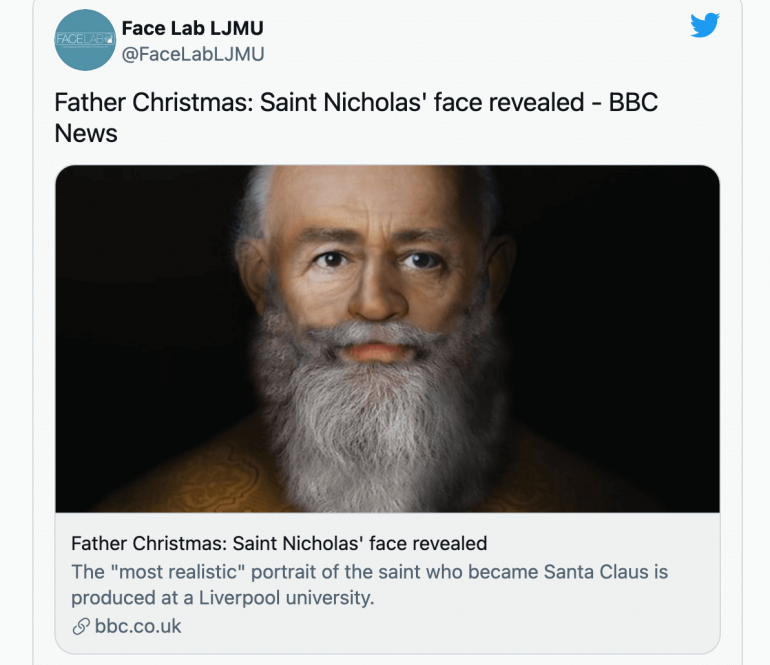Scientists reconstructed the face of St. Nicholas – here’s what they found

Scientists at a university in Liverpool unveiled what they say is the most realistic portrait ever created of St. Nicholas of Myra, the popular 4th century bishop best known as the inspiration for the modern-day figure of Santa Claus.
Researchers at Liverpool John Moores University's Face Lab used a facial reconstruction system and 3D interactive technology to create the portrait, which was unveiled on Dec. 6, 2014 - the feast day of St. Nicholas.
University Professor Caroline Wilkinson said the reconstruction relied on “all the skeletal and historical material” available, the BBC reports. A university spokeswoman said the new image uses “the most up-to-date anatomical standards, Turkish tissue depth data and CGI techniques.”
Among the features depicted in the saint’s image is a broken nose, which Wilkinson said had “healed asymmetrically, giving him a characteristic nose and rugged facial appearance.”
St. Nicholas lived 270-343 A.D. He was the bishop of Myra, in southern Turkey.
During his years as bishop, he was imprisoned during the Diocletian persecution, then later released when Constantine came to power.
He was known for his staunch defense of the faith, as well as his often anonymous generosity toward those in need.
Stories surrounding the saint abound. He is believed to have once rescued three sisters from being sold into slavery by throwing bags of gold through an open window into their house to pay their family’s debts.
Another popular story holds that he became so enraged by the heretic Arius – who claimed that Christ was not truly God – that he punched him during a heated debate at the Council of Nicea in 325 A.D
Based on the broken nose in the saint's facial reconstruction, maybe Arius punched him back.

Radio Veritas Asia (RVA), a media platform of the Catholic Church, aims to share Christ. RVA started in 1969 as a continental Catholic radio station to serve Asian countries in their respective local language, thus earning the tag “the Voice of Asian Christianity.” Responding to the emerging context, RVA embraced media platforms to connect with the global Asian audience via its 21 language websites and various social media platforms.











